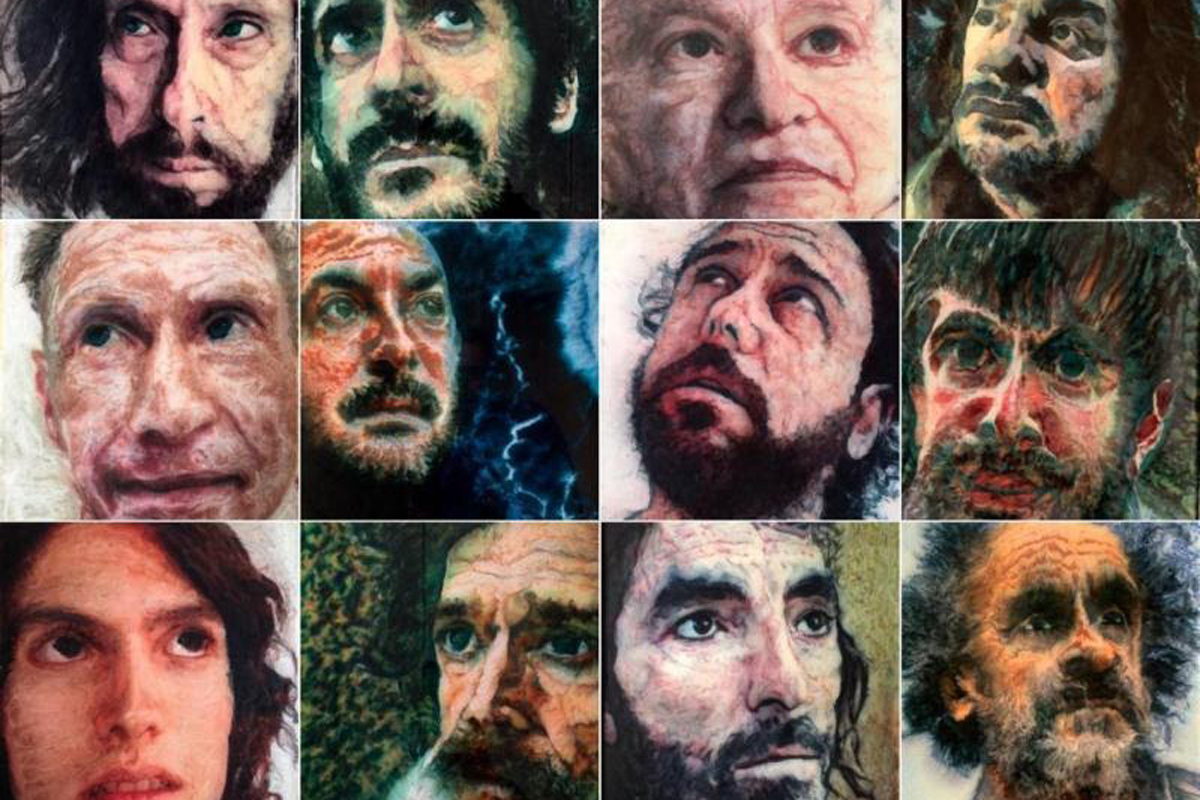The sacristy of the Cathedral of Toledo, where 'The Expolio' by D. Theotokópoulos rests, hosts until March 1 the portraits of the former Mecano
José María Cano: "We live in a time so soft that they are being moored up to gays"
José María Cano (61) began painting an apostolate in 2015, with images of the twelve disciples of Jesus, just as Rubens and Ribera did at the time. This was a customary order for the painters of the Golden Age when a new-floor convent was built. Cano painted them without expectation or commission, without an exhibition or economic claim. As a consequence of his personal becoming. As small mirrors in which to fix physiognomies of its evolution. Over four years he portrayed 12 men of different ages and conditions . He painted them looking up, in search of light.
They would seem painted for the exhibition 'Apostolate', which hosts the sacristy of the Toledo Cathedral until March 1. There, mysticism appears in the shadow of the series that El Greco made four and a half centuries ago . At the top of the room, the apostles of Doménikos Theotokópoulos look down, as if both groups had been captivated by the crimson robe of 'The Expolio', even though neither of them was painted for such an arrangement.
Cano's apostles seem to have honored their etymology. Apostle comes from the Greek: "apo" means "apart, far"; and "stello", "I send". Pictorially born in Malta , the first place that St. Paul evangelized, they can be seen in Spain after turning around the world. He presented them in May last year at the San Diego Museum of Modern Art , in parallel to a great show about the Spanish Golden Age. They were later exposed, during the past Christmas, at the National Museum of Ancient Art in Lisbon , the equivalent of the Prado Museum for the Portuguese. There they were faced with another apostolate, which Francisco de Zurbarán did for the Monastery of Sao Vicente da Fora in 1633, during the time of the Iberian unification (the half century in which Spain and Portugal were a single kingdom).
Cano's apostles represent an important change in the career of one of the most sought-after living Spanish painters. Until now, his works were in large format, large conceptual panels that could reach 350,000 euros in auctions . Never before has he made pictures in this size, on a human scale, in which the eyes of the portrayed are at the level of the spectator.
Which gives another idea of what the author of the 'Our Father' who Montserrat Caballe sang to Benedict XVI . Although the apostles of El Greco and Zurbarán are transcended and, in the case of the latter, carry elements of their martyrdom that help their identification, those of Cano are closer to the human being than to the saint. The same happened with the 'tronies' of the painters of the Netherlands during the sixteenth and seventeenth centuries: portraits made of anonymous people, which were not intended to be sold when portrayed, and who tried to capture a human characteristic as a critical, moralizing or aesthetic. The best known example is 'The Lady of the Pearl' (1665-1667), by Vermeer.
In addition to El Greco's apostles, José María Cano's paintings share space in the sacristy art gallery with works by Caravaggio, Velázquez, Tiziano or Goya under the vault decorated by Luca Giordano. Since Goya, the work of a living artist had not entered Toledo's cathedral . All this in a space where the sacred and the everyday (it is where the priests change clothes to impart the Eucharist) coexist without friction. Cano this should not bother you. In an interview with EL MUNDO a year ago, the musician who became an artist said: "Christianity, apart from being the reference that is culturally and traditionally natural to me, seems like a good path . Even considering it a humanism instead of a religion". It is true, he said then, "that, in our times, the principles of Jesus Christ are of difficult practical development." And he put forward a hypothesis: "Jesus Christ today would be a leader of the extreme left who would be against violent demonstrations. Come on, nobody would vote for him. In fact today if you say you are a Christian you do not sell a broom. But the well-understood Christianity has always been persecuted. Sometimes by the Church itself. And in turn, the Church, the more Christian it has been, the more persecuted it has been. " During the presentation of the exhibition in Lisbon, Cano stressed the "spiritual meaning" that his set of portraits had. A few weeks earlier, during a workshop in San Diego, he had said: "We all have a Judas inside. And it's very indicative. It's about moving away from it."
The apostolic portraits, made with the encaustic technique (wax and molten resin, like the portraits of the Roman era of Hawara, in Egypt, which were placed on the heads of the mummies) are also a collection of organic faces. This is the case of St. John, the youngest (and, according to tradition, the most beloved) of the disciples of Jesus, whom Dani, the son of José María, puts on his face . He is the one who has encouraged the former Mecano to be slowly returning to music, although in a different record than he had in the group: he now sings lyric or jazz accompanied by his son. Together with Dani's portrait, Javier Hidalgo, CEO of Globalia, can be found. Or that of Alfonso de Borbón Yordi, husband of Eugenia Silva. Or Ignasi Maluquer, president and co-founder of the Starlite festival in Marbella. Or art critic Marco Livingstone. All with their eyes up.
According to the criteria of
Know more

